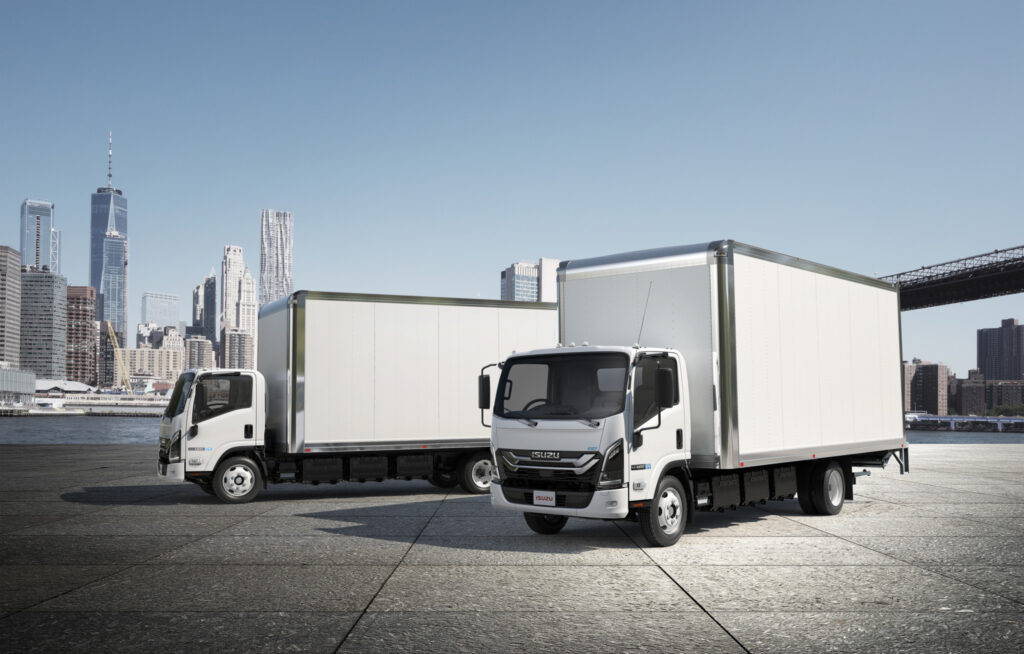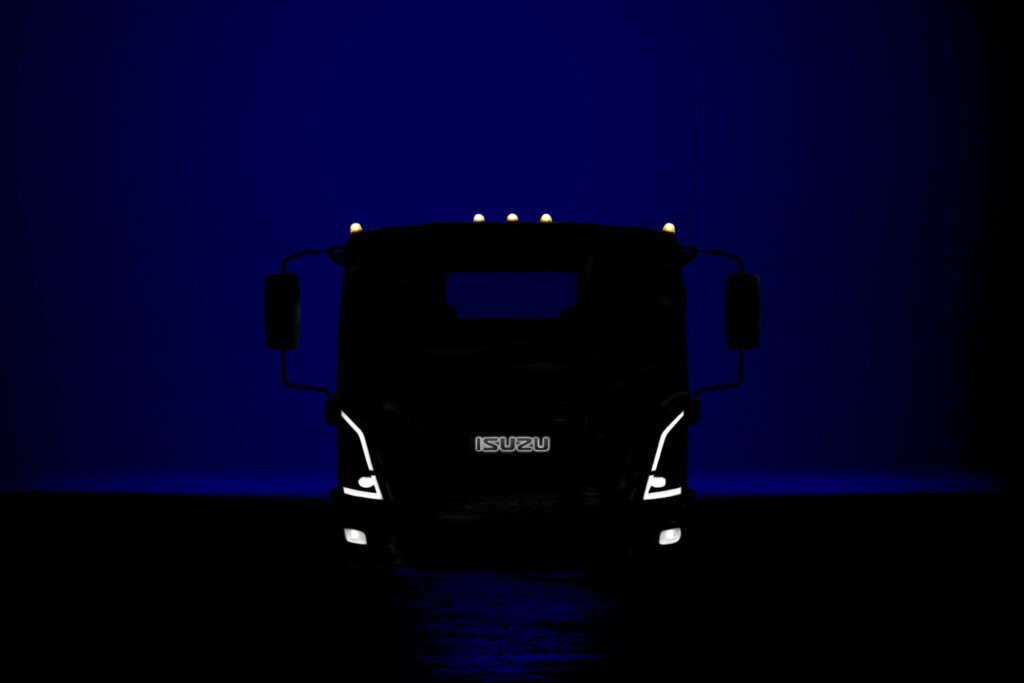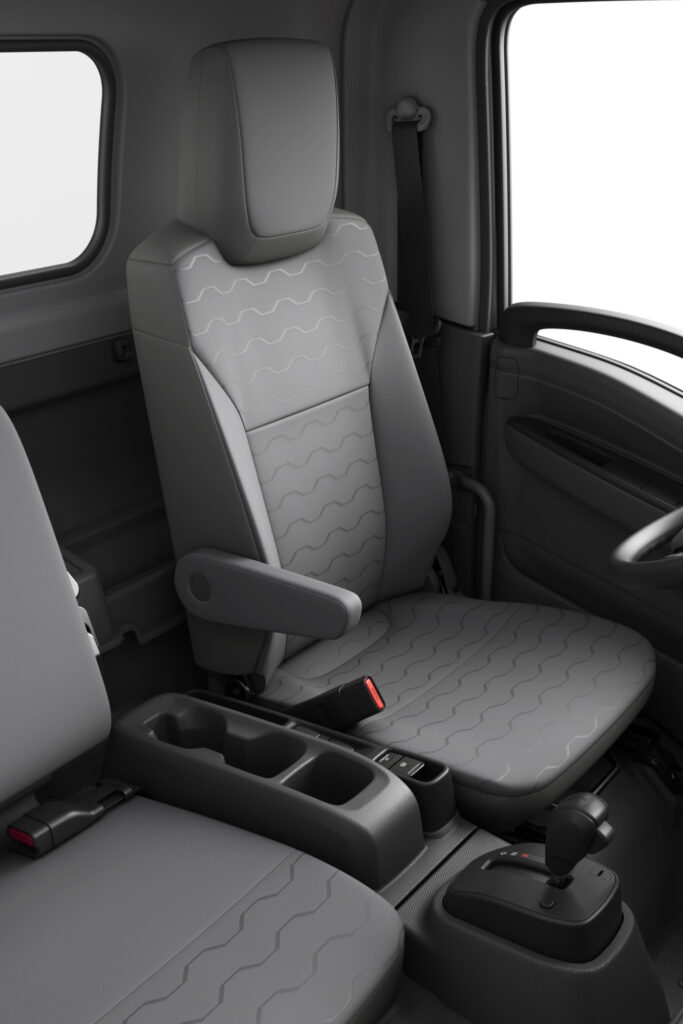Isuzu N-Series EV comes to Canada, U.S. and Japan
Isuzu is bringing battery-electric power to three countries, simultaneously launching the N-Series EV in Canada, the U.S. and Japan.
“The new EV is truly a revolutionary product. It is a fully electric vehicle developed by Isuzu, ready for large-scale production,” said Isuzu Commercial Truck of Canada president Shaun Skinner, when unveiling the model at the Work Truck Show.
The Class 5 truck is powered via 20-kWh lithium-ion battery packs that will be grouped in three-, five-, seven- or nine-battery configurations depending on the desired range. Three batteries will deliver an estimated range of 41-80 miles (66-129 km), while five increase that to 68-130 miles (109-209 km), seven take it to 95-180 miles (153-290 km), and nine deliver 122-235 miles (196-378 km).

“A truck’s actual range will vary based on a number of factors, including number of battery packs, vehicle options, driving conditions and habits, vehicle and battery’s condition and outside temperature,” Skinner stressed.
N-Series EV trucks with battery capacities of 60, 100, 140, and 180 kWh will have an AC Level 2 charging time of 5.5 to 10 hours and a DC fast charging time of one to 2.5 hours.
‘Perfect time to offer an electric truck’
“We believe this is the perfect time to offer an electric truck,” Skinner added, referring to ongoing investments in charging infrastructure. “We are ready for a future with multiple powertrain offerings – gas, diesel and electric.”
Enhancements are not limited to the powertrain alone. Sitting atop the batteries and motors is an entirely new N Series cab.
First among the changes to greet electric truck buyers will be an illuminated Isuzu badge at the top of the lineup’s familiar smile-shaped grille. And a new headlamp assembly includes LED clearance lights, turn signals, high and low beams, and side marker lights.
But the changes to the truck with a gross vehicle weight rating of 19,500 lb. are more than skin deep.
“It is our most aerodynamic cab yet thanks to its newly designed front bumper,” Skinner added, noting the new cab will be the first to feature a global “cross-flow” design that will eventually be applied to all Isuzu trucks.

Changes in the cab
Inside, seat backs are 30 mm higher than those found in earlier N-Series models, while seat hip points on the new urethane cushions are 10 mm lower.
Drivers will then be greeted by a steering wheel that is slightly smaller than previous designs in the name of easier handling.
The steering wheel angle has been optimized, while integrated buttons control the driver information display, audio, and driver assistance features, Skinner said.
The optional advanced driver assistance system (ADAS) includes automatic emergency braking, lane departure warnings, a full-range adaptive cruise control, and distance alerts. Isuzu’s global electric architecture promises enhanced cybersecurity and manages the safety devices.

Vehicle information, meanwhile, is delivered in English, French or Spanish via a seven-inch display.
A forward vehicle start notification will notify drivers when a vehicle in front of the truck has moved forward a certain distance, such as at a traffic light. And Mis-acceleration Mitigation will kick in if an obstacle is detected in front of the truck and the accelerator is depressed more than necessary. In such cases, the engine output will be restricted.
Wheelbases range from 132.5 to 176 inches to accommodate different body lengths.
Gasoline, diesel and electric power
The N-Series EV joins a lineup that includes Class 3, 4 and 5 N-Series models powered by a 6.6-liter gasoline V8; Class 4 and 5 N-Series models featuring Isuzu’s 4HK1-TC turbodiesel; and the Class 6 and 7 F-Series models with Cummins B6.7 diesels.
Standard cab and crew cabs are available in Class 3 to 5 gasoline-powered trucks and Class 4 and 5 diesel-powered models. Isuzu’s new F-Series Class 6 and 7 models, powered by the Cummins B6.7 diesel engine, is available in a standard cab.
“We have always prided ourselves on offering a variety of powertrains to meet the needs of our owners,” Skinner said. “As we look at the regulatory landscape ahead of us, we know that the demand for a medium-duty truck powered by electricity is going to increase dramatically. And we will be ready, with the first electric production Class 5 low cab forward truck in the U.S. and Canadian marketplace.”
The N-Series EV will be available in the first half of 2024.
Have your say
This is a moderated forum. Comments will no longer be published unless they are accompanied by a first and last name and a verifiable email address. (Today's Trucking will not publish or share the email address.) Profane language and content deemed to be libelous, racist, or threatening in nature will not be published under any circumstances.
Factories move to different countries, based on relatively short term cost savings , political agenda and affiliation plus it is important to mention, that California is ” kicking out” a lot of major companies with their high cost.
Stuff made in Mexico is not as good as stuff made in USA or Canada.
Take VW cars as an example or Freightliner trucks made in Mexico.
China alternative has too much political BS and high cost for transportation in it.
Instead of focussing on AI Technology for manufacturing right here in Canada and USA , ( since no one wants to work anymore in labour jobs ) ,
still they are looking at cheaper short term alternatives like Mexico.
If we manufactured everything based mostly in factories with robots and AI Technology and having at least 75 % less workforce, we do not need China or Mexico.